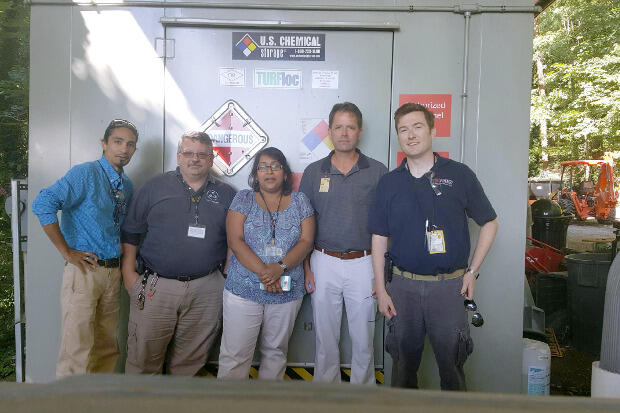
Dec. 22, 2016
A culture of safety
The Office of Safety and Risk Management is collaborating to implement guidelines for improving the safety culture at universities.
Share this story
A Guide to Implementing Safety Culture in Our Universities. The effort to build this publication began following tragic laboratory accidents at several universities around the country. As noted by the chairs of the task force that developed the guide: “The discovery enterprise can involve risk, but it is incumbent on all of us to embrace the idea that the culture of safety is foundational to our educational mission, the discovery process and responsible conduct of research.”
Virginia Commonwealth University is committed to promoting a positive, campuswide attitude of safety excellence and environmental stewardship to protect the university community and reduce risks. As such, VCU has begun implementing the recommendations of the APLU’s guidelines and the university will look to the greater VCU community to assist in this effort.
By definition, safety culture is a set of core values and behaviors that emphasize safety as an overriding priority. A safety culture is the end result of combined individual and group efforts toward values, attitudes, goals and proficiency of an organization’s health and safety program. While values are the foundation, safety culture is ultimately expressed through what is said and done — and everyone will play a part in keeping themselves and others safe. In this context, safety will not just apply to research laboratories; the culture will cross boundaries to mitigate hazards in many other areas as well, including the arts, engineering, maintenance, etc.
How does VCU do this? In the coming months, VCU will embark on increased efforts to engage the community to promote a safe culture within the university. VCU encourages faculty, staff and students to help in the following ways:
- Educate everyone on the importance of reporting injuries and incidents that may not have led to an injury. Reporting is not playing the blame game. Often when people engage in at-risk behaviors that lead to incidents, there are organizational systems and practices that inadvertently encourage those at-risk practices.
- Integrate safety in the day-to-day work. Avoid treating safety as something separate and only discussed during the weekly or monthly “Safety Meeting.” Safety considerations ought to be an ongoing conversation and part of the decision-making process.
- Collaborate with the departments that are designated to assist in promoting safety throughout the university. Building trust will help everyone work together to see improvements.
Responsibility for fostering and sustaining a safe campus rests on all members of the VCU community. If you want to contribute your enthusiasm and make a difference, contact Tom Briggs, assistant vice president of safety and risk management at 804-827-2240.
Subscribe to VCU News
Subscribe to VCU News at newsletter.vcu.edu and receive a selection of stories, videos, photos, news clips and event listings in your inbox.









